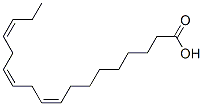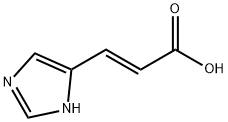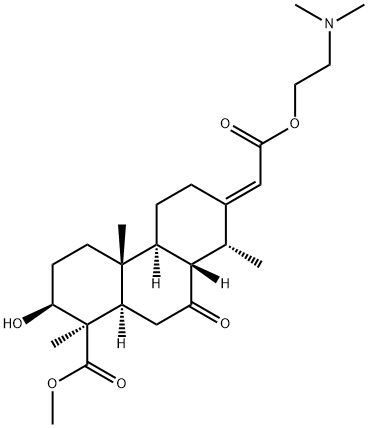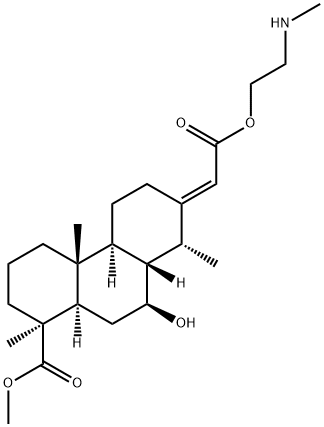TRAUMATIC ACID
- CAS NO.:6402-36-4
- Empirical Formula: C12H20O4
- Molecular Weight: 228.28
- MDL number: MFCD00004443
- EINECS: 229-019-4
- SAFETY DATA SHEET (SDS)
- Update Date: 2023-06-08 17:06:34

What is TRAUMATIC ACID?
Description
Traumatic acid, formally?trans-2-dodecenedioic acid, is a plant hormone that was isolated from damaged green beans by Caltech chemists James English, Jr., James Bonner, and A. J. Haagen-Smit in 1939. They describe traumatic acid and its acid–aldehyde cousin traumatin as “wound hormones” that is, substances produced by a plant to “heal” itself after it is damaged.
The same year, English et al.?synthesized traumatic acid?by converting undecylenic acid to the half-aldehyde of sebacic acid, which they then condensed with malonic acid in the presence of pyridine. CO2?was split off after the condensation, and the unsaturated diacid was isolated after hydrolysis of the ester group.
Traumatic acid may heal wounds in plants, but it may also be symbolic of American society’s wounds during this election season. May your trauma be kept to a minimum.
Chemical properties
white to beige crystalline powder
The Uses of TRAUMATIC ACID
Traumatic Acid, is the product of a biosynthetic pathway from a physiological role of alpha-ketol fatty acids in plant lipid hydroperoxide lyase metabolism. This compound is also used in would healing as it stimulates cell division to form a protective callus around the wound site.
What are the applications of Application
Traumatic Acid is a product of the hydroperoxide lyase pathway in plants
Definition
ChEBI: A monounsaturated straight-chain dicarboxylic acid with the double bond at C-2; a plant wound-healing hormone.
Purification Methods
Crystallise the acid from EtOH, acetone or glyme. The bis-4-phenylphenacyl ester has m 144-145o (from EtOH). [Beilstein 2 III 1978, 2 IV 2279.]
Properties of TRAUMATIC ACID
| Melting point: | 165-167 °C(lit.) |
| Boiling point: | 290.1°C (rough estimate) |
| Density | 1.0051 (rough estimate) |
| refractive index | 1.4627 (estimate) |
| storage temp. | 2-8°C |
| solubility | Chloroform (Very Slightly, Heated), DMSO (Slightly) |
| form | Solid |
| pka | 4.78±0.10(Predicted) |
| color | White to Off-White |
| Merck | 14,9576 |
| CAS DataBase Reference | 6402-36-4(CAS DataBase Reference) |
Safety information for TRAUMATIC ACID
| Signal word | Warning |
| Pictogram(s) |
 Exclamation Mark Irritant GHS07 |
| GHS Hazard Statements |
H315:Skin corrosion/irritation H319:Serious eye damage/eye irritation |
| Precautionary Statement Codes |
P264:Wash hands thoroughly after handling. P264:Wash skin thouroughly after handling. P280:Wear protective gloves/protective clothing/eye protection/face protection. |
Computed Descriptors for TRAUMATIC ACID
New Products
3-Iodophenylacetic acid 3-Pyridineacetonitrile, α-hydroxy- 2-Propanamine, 1-chloro-, hydrochloride (9CI) 3-(hexyloxy)-4-(pyridin-3-yl)-1,2,5-thiadiazole 2-Hexyn-1-ol Dibenzo-18-crown-6 Nickel(II) perchlorate hexahydrate, 98% 4-Bromophenylacetonitrile, 95% 3-Bromo-4-fluoroaniline, 97% Sodium tetraborate decahydrate, 98% Palladium(II) acetate, trimer, Pd 99% 4-Bromo-2-chlorotoluene, 97% N N Dimethylformamide Dimethyl Acetal (Dmf Dma) 2,3-Dichloro Benzoyl Cyanide [Side Chain] Bis(2-Chloroethyl) Amine Hydrochloride L-Glutamic Acid Diethyl Ester Hydrochloride 5-(Difluoromethoxy)-2-Mercaptobenzimidazole 1-Ethyl-3-(3-Dimethylaminopropyl)-Carbodiimide Hydrochloride [EDC Hcl] 1,4-Napthoquinone Bromoiodomethane Sodium Bicarbonate Methylene Dichloride (MDC) Ethyl Acetate Indole-3-Carbinol (I3C)Related products of tetrahydrofuran








You may like
-
 Traumatic Acid CAS 6402-36-4View Details
Traumatic Acid CAS 6402-36-4View Details
6402-36-4 -
 17604-74-9 3-Pyridineacetonitrile, α-hydroxy- 98+View Details
17604-74-9 3-Pyridineacetonitrile, α-hydroxy- 98+View Details
17604-74-9 -
 131987-69-4 98+View Details
131987-69-4 98+View Details
131987-69-4 -
 Cyclohexane, (2-propynyloxy)- 67967-07-1 98+View Details
Cyclohexane, (2-propynyloxy)- 67967-07-1 98+View Details
67967-07-1 -
 764-60-3 2-Hexyn-1-ol 98+View Details
764-60-3 2-Hexyn-1-ol 98+View Details
764-60-3 -
 2-Propanamine, 1-chloro-, hydrochloride (9CI) 98+View Details
2-Propanamine, 1-chloro-, hydrochloride (9CI) 98+View Details
5968-21-8 -
 3-Iodophenylacetic acid 1878-69-9 98+View Details
3-Iodophenylacetic acid 1878-69-9 98+View Details
1878-69-9 -
 132945-75-6 (S)-1-Boc-3-methanesulfonyloxy-pyrrolidine 98+View Details
132945-75-6 (S)-1-Boc-3-methanesulfonyloxy-pyrrolidine 98+View Details
132945-75-6
